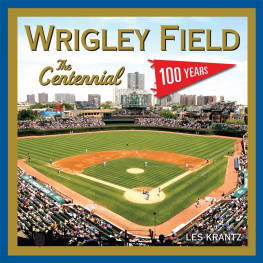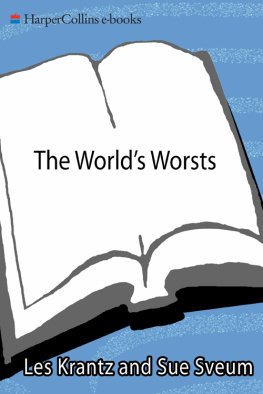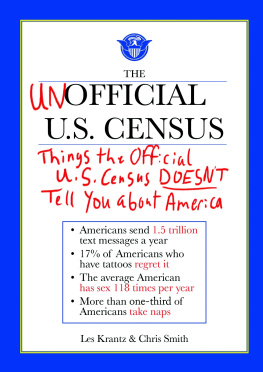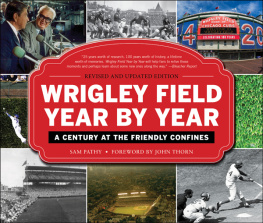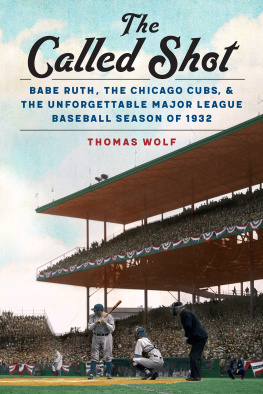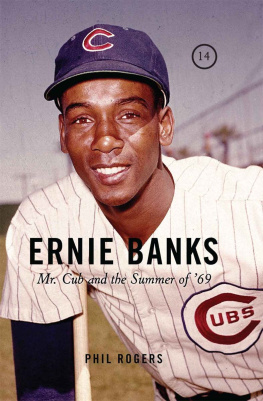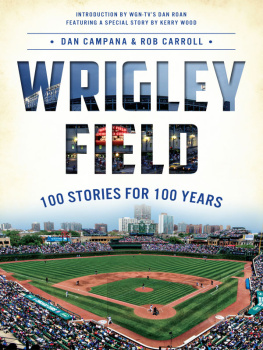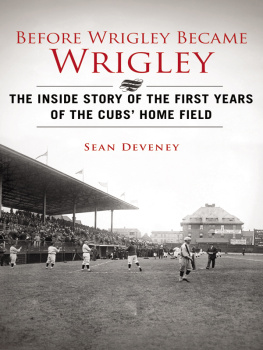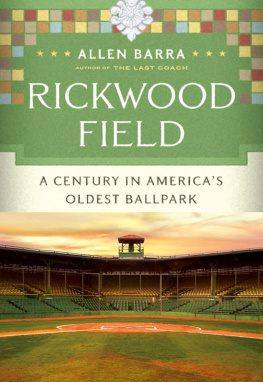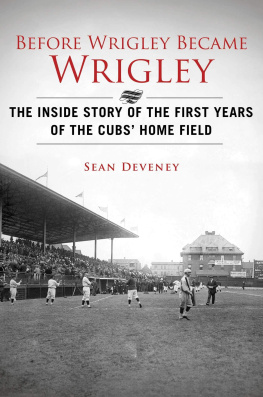
All materials other than items excerpted with permission 2013 Les Krantz
Contributing writers: Bill Chastain, Eric Short, Matthew Silverman, Marty Strasen, Sue Sveum Video editor: Jack Piantino
No part of this publication may be reproduced, stored in a retrieval system, or transmitted in any form by any means, electronic, mechanical, photocopying, or otherwise, without the prior written permission of the publisher, Triumph Books LLC, 814 North Franklin Street, Chicago, Illinois 60610.
Library of Congress Cataloging-in-Publication Data
Krantz, Les.
Wrigley Field : the centennial : 100 years at the friendly confines / Les Krantz.
pages cm
Includes bibliographical references.
ISBN 978-1-60078-834-5 (hardback)
1. Wrigley Field (Chicago, Ill.)History. 2. Chicago Cubs (Baseball team)History. I. Title.
GV417.W75K73 2013
796.357640977311 2 23
2013023563
This book is available in quantity at special discounts for your group or organization. For further information, contact:
Triumph Books LLC
814 North Franklin
Chicago, Illinois 60610
(312) 337-0747
www.triumphbooks.com
Printed in China
ISBN: 978-1-60078-834-5
Design by Eileen Wagner Design
To my favorite companions at Wrigley Field, Ryan and Isabel (Issy) Krantz: May the breezes from the ballpark as well as the winds of your time reward youand the Cubbies toowith abundance of home runs!
Contents
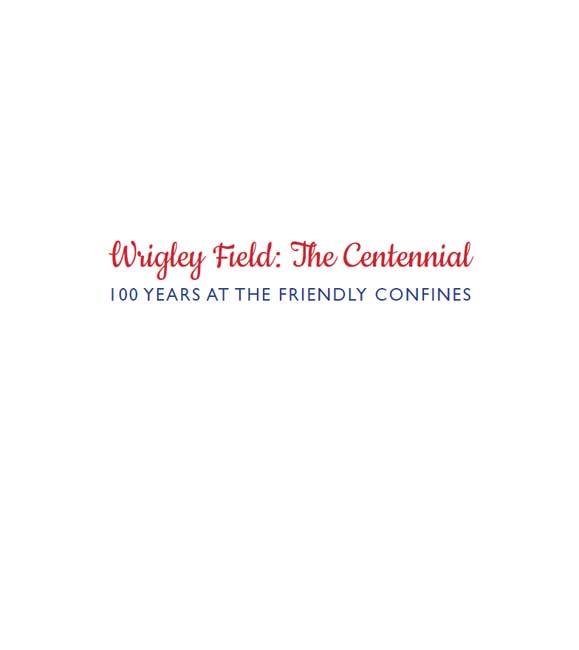
PART I
Building a Ballpark:
THE HISTORY OF WRIGLEY FIELD
Wrigley Field. Just the name evokes the image of warm, sunny days spent at the ballpark, the breeze blowing in off Lake Michigan. Or maybe its blowing out, carrying home-run balls out onto Waveland Avenue. These are the Friendly Confineshome of the beloved Chicago Cubs.

The Chicago Whales emblem.
T HE SECOND-OLDEST ballpark in the nation, Wrigley Field epitomizes Americas pastime. At Wrigley, its baseball the way baseball used to be. Babe Ruth played there. So did Lou Gehrig and Ted Williams. Ernie Banks, Ron Santo, and Sammy Sosa called Wrigley Field home. Wrigley Field is truly an icon.
But it wasnt always that way. Would the mystique remain if this were Weeghman Park? Who can even spell that? Whod want to name their dog after that stadium? And would we want to root for the Chicago Federals (or Chi-Feds, as they were sometimes called)? Or the Whales? Because those are the teams that played at Weeghman.
Maybe we should back up a bit. At the start of the 20th century, Clark and Addison Streets, where Wrigley Field proudly stands today, were smack dab in the middle of a working-class neighborhood. The houses held two or three apartments each, mostly filled with factory workers and their families. The rest of the neighborhood was made up of factories and warehouses.
While the National Leagues Chicago Cubs were busy winning their first and only back-to-back World Series, in 1907 and 1908, at their home field, the West Side Club, the working stiffs who resided near Clark and Addison represented the nations industry, not the national pastime.

The Friendly Confines.

Charlie Weeghman (left) and two associates at the Weeghman Park groundbreaking ceremony on March 4, 1914.
And then along came Charles Henry Lucky Charlie Weeghman. He was a prosperous businessman who earned his money the old-fashioned wayby working for itand he found himself with a little extra cash around the same time the Federal League was trying to establish itself in baseball. Weeghman bought the Chicago Federals in 1914 and decided they needed a suitable place to play their games.
When a vacant North Side lot caught Weeghmans attention, he promptly leased the land and hired Zachery Taylor Davis, a well-known local architect, to design the future ballpark. Davis was already established in the Chicago baseball community; he had designed Comiskey Park for the major league White Sox just four years earlier. But Weeghmans field was never intended to compete with the worlds greatest baseball palace on the South Side. Instead he created a ballpark that was the perfect size for the untested Federals and their fans. And it came in at half the price of Comiskey Parka mere $250,000.
Construction of the 14,000-seat ballpark kicked off with a groundbreaking ceremony on March 4, 1914, and ended on April 23 of the same year with a parade, rose presentation, andjust like at baseball games todaythe ceremonial throwing of the first pitch. With extra circus seats brought in for that first game, more than 21,000 baseball fans were on hand to watch the Chi-Feds beat Kansas City by a score of 91.
Weeghman was a baseball lover, but he soon learned that even with a winning season, owning a team in the Federal League was not the best investment. He was reluctant to put more money into making improvements at the park, but after a record number of home runs were hit over the left-field wall during that inaugural season, Weeghman agreed to have the left-field fence moved back 25 feet. The only other changes he made were to remove the right-field stands and double the left-field bleachers.
In 1915 the Chi-Feds were renamed the Whalesthe result of a fan naming contest. The team won the Federal League pennant that year and managed to keep those bleacher seats full. And when the Federal League disbanded that same year, Weeghman was in a position to buy himself a new National League baseball team: the Chicago Cubs.
Formerly a West Side team, the Cubs were owned at the time by Charles P. Taft (brother of former US President William Taft) and run by Charles H. Thomas, who both resided in Cincinnati. Finding it difficult to manage the team from afar, they agreed to sell 90 percent of the franchise to Weeghman and a few investors (including William Wrigley Jr.) for $500,000.
Merging the Whales with the Cubs on his first National League roster, Weeghman secured Joe Tinker (of Tinker-to-Evers-to-Chance fame) as manager and moved the team to his own Weeghman Park. In 1916 the Cubs officially became North Siders, playing at what is today the oldest National League ballpark. The Cubs defeated the Cincinnati Reds by a score of 76 in their debut game at the corner of Clark and Addison.
Weeghman really catered to his audience. He was the first owner to allow fans to keep foul balls and the first to set up food booths behind the stands. A popular guy? No doubt.
Financial difficulties, however, caused Weeghman to sell his interest to William Wrigley Jr. in 1918, and he renamed the ballpark Cubs Park in 1920. It wasnt until several years later that the chewing-gum magnate apparently had a revelation: whats the point of owning a baseball team if you cant name the park after yourself? In 1926 Wrigley Field was born. Along with the new name, the park got an upgrade that year when an upper deck was added to the grandstands, doubling the seating capacity.

